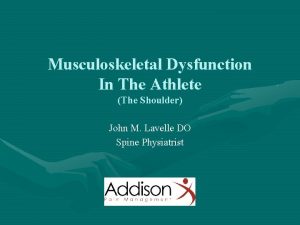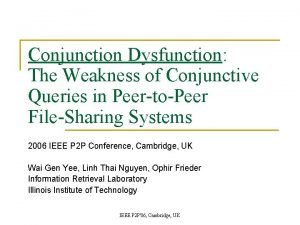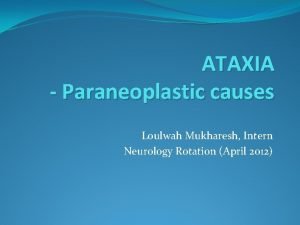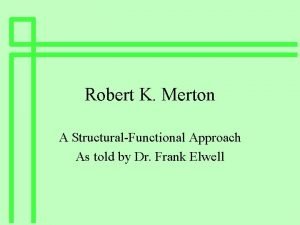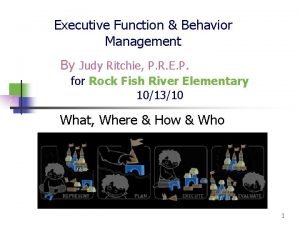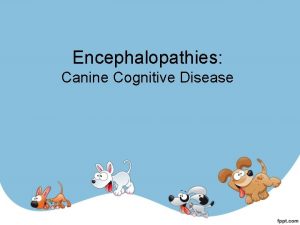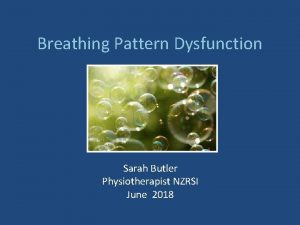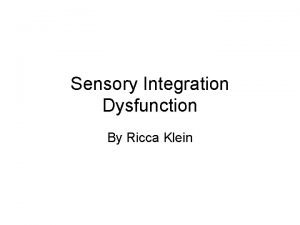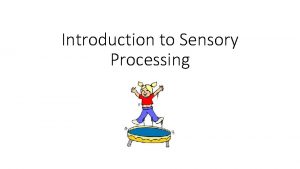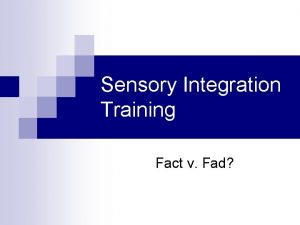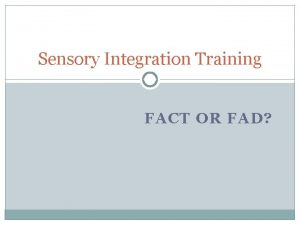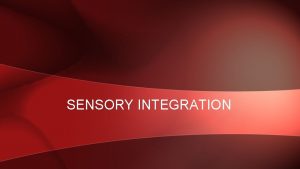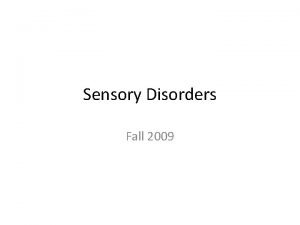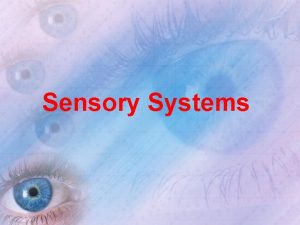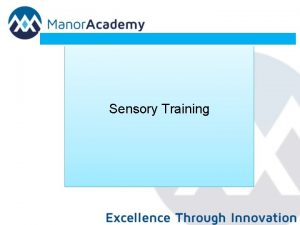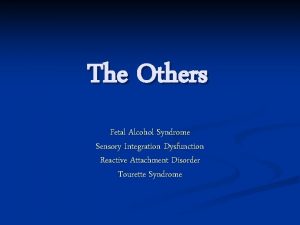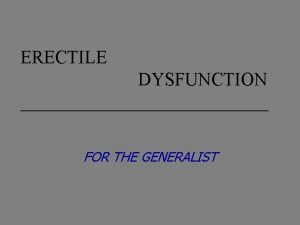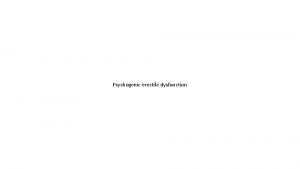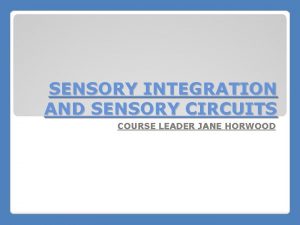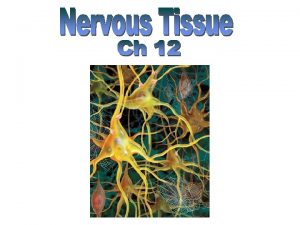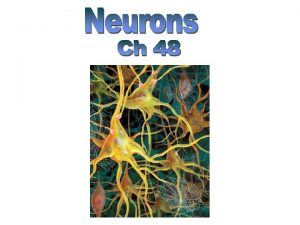Understanding Sensory Integration and Sensory Integration Dysfunction for
























- Slides: 24

Understanding Sensory Integration and Sensory Integration Dysfunction for Children with Disabilities Presentation By: Shirley Castano, OTR/L

Objectives n n n To provide a basic understanding of sensory integration & sensory integration dysfunction. Understand the implications of sensory integration on learning & behavior. Provide information on sensory tools and sensory activities for the classroom.

Our 7 Sensory Systems n n n n Touch/tactile Vision/visual Hearing/auditory Taste/oral motor Smell/olfactory Body awareness/proprioceptive Balance/vestibular (in our inner ear)

Our Senses and/or Sensory Systems can significantly affect the way we behave.

What Influences Behavior? n n Age Past experiences Environment Culture n n Medical Diagnosis Medication Task/Event Gender

What is Sensory Integration?

Sensory Integration: The ability of our brain to interpret and organize sensory input from the external environment so that it produces a useful body response, as well as perceptions, emotions, and thoughts (Ayres, 2005)

Normal Sensory Integration n When our brain processes and organizes sensory information accurately, we are able to respond productively and appropriately to the demands of the environment.

Interpreting Sensations Hot stove Crowded Elevator Conversations

It’s a Process!

What is Sensory Integration Dysfunction?

Sensory Dysfunction

Sensory Dysfunction n n The brain is not organizing or processing sensory information accurately due to inefficient connections of the brain, which interfere with a person’s behavior and learning abilities. Children with Sensory Dysfunction may not respond to sensory stimuli the way others do.

Sensory Dysfunction n Responses to sensory input in the following manner: n Hypersensitivity (e. g. very sensitivity to noise or touch) n n n Stimuli from the environment is registered TOO INTENSELY. Sensory sensitive or Sensation avoiding Hyposensitivity (e. g. touch everything in sight or bumping into walls) n n Stimuli from the environment is registered LESS INTENSELY. Behaviors: Sensory-Seeking and/or passive with poor registration

Implications of Sensory Processing Dysfunction on Learning n n n n Difficulties in attention Poor Coordination Difficulties in processing Fluctuations in emotions and behavior Inconsistencies in performance Inability to cope with stress or change Poor social interactions (Murray-Slutsky & Paris, 2005)

Tools Used to Address Sensory Dysfunction n n Sensory Diet Brushing & Joint compression Weighted vests Therapeutic listening

Environment Our environment directly affects how we take in information n n Lighting Temperature Noise levels Space Seating

Modifying the Environment for n n Seating/ movement options Decrease visual stimuli Use of natural light or incandescent lamps Music: Soft, soothing music to calm n Intense and animated music to arouse Spacing n

KEEP IN MIND: Many factors influence Children’s behaviors, including the way they process sensory stimuli from the environment.

Calming/ Organizing Activities n n n Have children participate in heavy work throughout the day: pushing chairs, desks, carrying book bag or heavy objects Have weighted pillows or blanket available for children to use on lap during circle time Apply firm, consistent downward pressure into shoulders Slow rhythmical rocking Dim lights when noise level becomes too high Use soft classical music in the background

Calming/ Organizing Activities n n n Approach child from the front and let them know what you are doing Bear hugs Avoid unexpected touch Avoid light touch, such as tasseling the hair, light pats on shoulder or having child sit or stand near a touchy child during circle time Limit visual distractions (cover toy corner with tarp or sheets Use natural lights when possible

References n Ayres, J. (2005). Sensory Integration and the child. USA: Western Psychological Services. n Colby Trott, M. (2002). Oh behave? Sensory processing and n Murray-Slutsky, C. & Paris, B. A. (2005). Is it sensory or is it n behavioral strategies: A practical guide for clinicians, teachers, and parents. USA: Therapy Skill Builders. behavior: Behavior problem identification, assessment, and intervention. San Antonio, TX: Harcourt Assessment, Inc. Nackley, V. L. (2001). Sensory diet applications and environmental modifications: A winning combination. Sensory Integration Special Interest Section Quarterly, 24(1), 1 -4.

References n n n Olson, L. & Moulton, H. (2004). Use of weighted vests in pediatric occupational therapy practice. Physical and Occupational Therapy in Pediatrics, 24(3), 45 -59. Polcyn, P. & Bissell, J. (2005). Flexible models of service using the sensory integration framework in school settings. Sensory Integration Special Interest Section Quarterly, 28(1), 1 -4. Wilbarger, P. (1995). The sensory diet: Activity programs based on sensory processing theory. Sensory Integration Special Interest Section Newsletter, 18(2), 1 -3.

The End
 Systolic and diastolic dysfunction
Systolic and diastolic dysfunction Phases of 1st stage of labour
Phases of 1st stage of labour Arousal disorder symptoms
Arousal disorder symptoms Rib raising omt
Rib raising omt Zink common compensatory pattern
Zink common compensatory pattern Dr arshad ejazi
Dr arshad ejazi Rib somatic dysfunction
Rib somatic dysfunction True labour pains
True labour pains Conjunction dysfunction meaning
Conjunction dysfunction meaning What causes ataxia
What causes ataxia Frontal lobe epilepsy mri
Frontal lobe epilepsy mri Dysfunction merton
Dysfunction merton Diastolic dysfunction echocardiography
Diastolic dysfunction echocardiography Somatic dysfunction in osteopathic family medicine
Somatic dysfunction in osteopathic family medicine Nulliparous
Nulliparous Judy ritchie
Judy ritchie Impaired mentation
Impaired mentation Nzrsi
Nzrsi What is harmful dysfunction
What is harmful dysfunction Fascicle
Fascicle Need of national integration
Need of national integration Three dimensions of corporate strategy
Three dimensions of corporate strategy Make or buy continuum
Make or buy continuum Simultaneous integration meaning
Simultaneous integration meaning Fspos vägledning för kontinuitetshantering
Fspos vägledning för kontinuitetshantering






